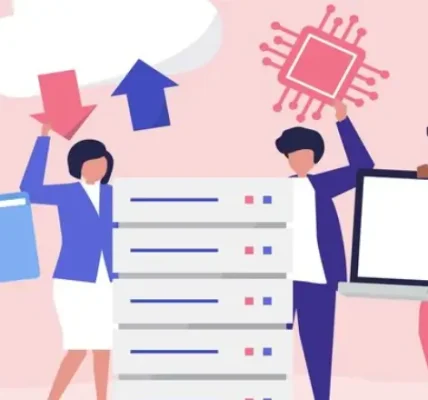In today’s digital landscape, email remains a critical communication tool for both personal and professional interactions. However, this widespread use also makes it a prime target for cyberattacks. Therefore, understanding email security is no longer optional; it’s a necessity. This article delves into the definition of email security, explores the potential risks associated with neglecting it, and outlines its various applications. We will also address common concerns and questions surrounding this vital aspect of online safety.
Defining Email Security: Protecting Your Digital Correspondence
Email security encompasses the proactive measures and technologies implemented to safeguard email accounts and communications from unauthorized access, data breaches, and malicious attacks. It’s a multi-layered approach that combines technical solutions, user education, and robust policies to ensure the confidentiality, integrity, and availability of email data.
Key Components of Email Security:
- Authentication: Verifying the sender’s identity to prevent spoofing and phishing.
- Encryption: Scrambling email content to protect it from eavesdropping during transit and storage.
- Spam Filtering: Blocking unwanted and potentially harmful emails from reaching the inbox.
- Malware Detection: Identifying and preventing malicious software from entering the system through email attachments or links.
- Data Loss Prevention (DLP): Preventing sensitive information from leaving the organization through email.
The Risks of Ignoring Email Security: A Cyber Threat Landscape
Neglecting email security can expose individuals and organizations to a wide range of cyber threats, each with potentially devastating consequences.
Common Email Security Risks:
- Phishing Attacks: Deceptive emails designed to trick users into revealing sensitive information like passwords and credit card details.
- Malware Infections: Emails containing malicious attachments or links that can infect devices with viruses, ransomware, or other harmful software.
- Business Email Compromise (BEC): Sophisticated scams targeting businesses with the aim of stealing funds or sensitive data by impersonating executives or trusted partners.
- Data Breaches: Unauthorized access to email accounts leading to the exposure of confidential information such as customer data, financial records, and intellectual property.
- Spam and Unsolicited Email: While often just an annoyance, spam can also be a vehicle for phishing attacks and malware distribution.
Strong email security measures are the first line of defense against these threats. Protecting your email goes beyond just using a strong password, although that is crucial. It involves a holistic approach that considers the vulnerabilities inherent in email communication.
Uses and Applications of Email Security: A Comprehensive Approach
Email security is not a one-size-fits-all solution. Its applications vary depending on the specific needs and risk profile of the user or organization. Several tools and protocols are now available to enhance email security.
Email Security in Action:
- For Individuals: Protecting personal email accounts from phishing scams, malware, and identity theft. Utilizing two-factor authentication and being cautious about clicking suspicious links are key.
- For Businesses: Safeguarding sensitive business data, preventing financial fraud, and maintaining regulatory compliance. Implementing robust email filtering, encryption, and employee training programs are essential.
- For Government Agencies: Protecting national security information, preventing cyber espionage, and ensuring the confidentiality of government communications.
FAQ: Addressing Common Concerns about Email Security
Here are some frequently asked questions about email security:
- Q: What is two-factor authentication (2FA)?
A: 2FA adds an extra layer of security by requiring a second verification step, such as a code sent to your phone, in addition to your password. - Q: How can I identify a phishing email?
A: Look for suspicious sender addresses, grammatical errors, urgent requests for personal information, and mismatched links. - Q: What should I do if I suspect my email account has been compromised?
A: Immediately change your password, enable 2FA, and notify your email provider. If it’s a work email, alert your IT department.
- Q: Are free email services secure?
A: While free email services often offer basic security features, they may not provide the same level of protection as paid services. Consider your security needs when choosing an email provider.
Ultimately, the effectiveness of any email security system relies on user awareness and responsible online behavior. The importance of robust email security cannot be overstated in today’s interconnected world.
In today’s digital landscape, email remains a critical communication tool for both personal and professional interactions. However, this widespread use also makes it a prime target for cyberattacks. Therefore, understanding email security is no longer optional; it’s a necessity. This article delves into the definition of email security, explores the potential risks associated with neglecting it, and outlines its various applications. We will also address common concerns and questions surrounding this vital aspect of online safety.
Email security encompasses the proactive measures and technologies implemented to safeguard email accounts and communications from unauthorized access, data breaches, and malicious attacks. It’s a multi-layered approach that combines technical solutions, user education, and robust policies to ensure the confidentiality, integrity, and availability of email data;
- Authentication: Verifying the sender’s identity to prevent spoofing and phishing.
- Encryption: Scrambling email content to protect it from eavesdropping during transit and storage.
- Spam Filtering: Blocking unwanted and potentially harmful emails from reaching the inbox.
- Malware Detection: Identifying and preventing malicious software from entering the system through email attachments or links.
- Data Loss Prevention (DLP): Preventing sensitive information from leaving the organization through email.
Neglecting email security can expose individuals and organizations to a wide range of cyber threats, each with potentially devastating consequences.
- Phishing Attacks: Deceptive emails designed to trick users into revealing sensitive information like passwords and credit card details.
- Malware Infections: Emails containing malicious attachments or links that can infect devices with viruses, ransomware, or other harmful software.
- Business Email Compromise (BEC): Sophisticated scams targeting businesses with the aim of stealing funds or sensitive data by impersonating executives or trusted partners.
- Data Breaches: Unauthorized access to email accounts leading to the exposure of confidential information such as customer data, financial records, and intellectual property.
- Spam and Unsolicited Email: While often just an annoyance, spam can also be a vehicle for phishing attacks and malware distribution.
Strong email security measures are the first line of defense against these threats. Protecting your email goes beyond just using a strong password, although that is crucial. It involves a holistic approach that considers the vulnerabilities inherent in email communication.
Email security is not a one-size-fits-all solution. Its applications vary depending on the specific needs and risk profile of the user or organization. Several tools and protocols are now available to enhance email security.
- For Individuals: Protecting personal email accounts from phishing scams, malware, and identity theft. Utilizing two-factor authentication and being cautious about clicking suspicious links are key.
- For Businesses: Safeguarding sensitive business data, preventing financial fraud, and maintaining regulatory compliance. Implementing robust email filtering, encryption, and employee training programs are essential.
- For Government Agencies: Protecting national security information, preventing cyber espionage, and ensuring the confidentiality of government communications.
Here are some frequently asked questions about email security:
- Q: What is two-factor authentication (2FA)?
A: 2FA adds an extra layer of security by requiring a second verification step, such as a code sent to your phone, in addition to your password. - Q: How can I identify a phishing email?
A: Look for suspicious sender addresses, grammatical errors, urgent requests for personal information, and mismatched links. - Q: What should I do if I suspect my email account has been compromised?
A: Immediately change your password, enable 2FA, and notify your email provider. If it’s a work email, alert your IT department. - Q: Are free email services secure?
A: While free email services often offer basic security features, they may not provide the same level of protection as paid services. Consider your security needs when choosing an email provider.
Ultimately, the effectiveness of any email security system relies on user awareness and responsible online behavior. The importance of robust email security cannot be overstated in today’s interconnected world.
Beyond the Basics: Digging Deeper into Email Security
So, what advanced techniques are available to further fortify your email defenses? Are there specific industry regulations that dictate email security protocols, and how do they impact businesses? Do smaller businesses need to invest as heavily in email security as large corporations, or can they get away with simpler solutions? Furthermore, how often should one update their email security protocols and software to stay ahead of evolving cyber threats? Is there a way to quantify the return on investment (ROI) of implementing robust email security measures? And lastly, what role does employee training play in the overall effectiveness of an email security strategy?
Advanced Email Security Questions:
- DMARC, SPF, and DKIM: Ever heard of these acronyms? Don’t they sound like secret agent code names? Could implementing these email authentication protocols significantly reduce phishing and spoofing attacks?
- AI-Powered Security: Are artificial intelligence and machine learning truly revolutionizing email security? Can they proactively identify and neutralize threats that traditional methods might miss?
- Email Archiving: Thinking about compliance and legal requirements? Isn’t email archiving a crucial component for businesses facing audits or investigations?
- Mobile Email Security: With everyone checking email on their phones, is mobile email security a critical consideration? What steps can you take to protect your email on mobile devices?
The Future of Email Security: What Lies Ahead?
Given the ever-changing threat landscape, what does the future hold for email security? Will quantum computing pose a significant threat to current encryption methods, and how can we prepare for that possibility? Will passwordless authentication become the norm, eliminating the need for vulnerable passwords altogether? And could decentralized email systems, powered by blockchain technology, offer a more secure and private alternative to traditional email services? These questions will shape the ongoing evolution of how we protect our digital correspondence. But more importantly, are you ready to adapt and evolve with the future of email security?


